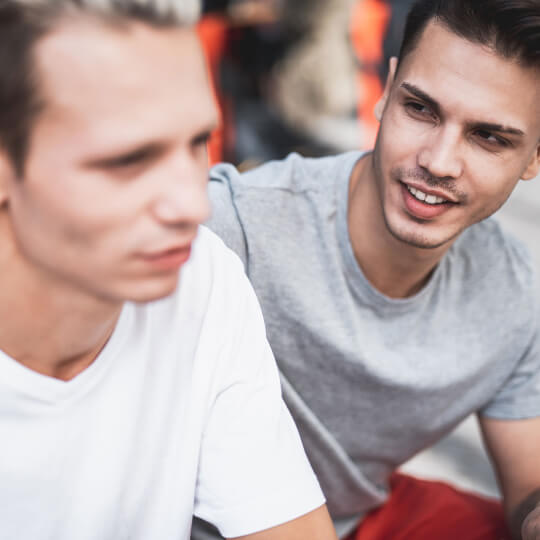What can I do?
There are many ways you can support your friend or family member.
Make sure they’re safe and not about to harm themselves
If their life or safety is at risk and they need urgent help, call Triple Zero (000).
If they’re having thoughts about suicide or self-harm, encourage them to call Lifeline on 13 11 14 or the Suicide Call Back Service on 1300 659 467.
Listen without judgement
You may feel shocked, upset or angry, but try to stay calm and focus on understanding what they’re going through and how it’s making them feel. Remember, it’s not their fault. The person who shared their image or video, or who’s threatening them, is the one who’s done the wrong thing.
Use supportive language
It’s important to avoid phrases that might make them feel worse, like ‘You must be so embarrassed’ or ‘I would want to die if I were you’. You could start with:
- This isn’t your fault
- I’m glad you came to me
- I know it took courage to tell me about this
- Let’s talk to…
If they’re angry with themselves, ask them to think about the caring words they would use if this happened to a close friend, and then help them to apply those same words to themselves.
Help have the image or video removed
Let them know that eSafety can have their intimate photo or video removed and help stop its spread online, or help stop the threats to share it. You could show them our information about image-based abuse and help them fill out our online report form.
You can also help them create a hash (digital fingerprint) to prevent the image or video being uploaded elsewhere.
Let them know how to get more support
People sometimes find it easier to talk with a counsellor or psychologist than with a friend or family member, especially if they feel embarrassed or ashamed. You could help them contact a free, confidential counselling and support service. Lifeline provides 24/7 crisis support on 13 11 14 for people of all ages and Kids Helpline on 1800 55 1800 is for young people up to 25.
You can also show them our page on How to manage the impacts of image-based abuse. This includes tips on how they can take care of their wellbeing and feel comfortable online again.
Check how they’re doing
Look out for signs they may be depressed or anxious – these can appear immediately or sometime after the experience. They can include changes in their:
- mood
- sleep patterns
- appetite
- energy levels
- willingness to socialise
- attendance at school or work.
If you notice any of these changes, talk with them about how a psychologist or counsellor may be able to help, and the options available.
Help them stay socially connected
Many people feel worried, embarrassed or uncomfortable around others when they have experienced image-based abuse. They may need help to build up their confidence again, both offline and online. You could help them keep in contact with trusted friends or set up safe social opportunities that are likely to be positive.
After a bad experience they may be scared to go online again. But staying offline may make them feel left out and more isolated from the people and experiences that usually make them feel part of a community. You could suggest they change their device or account settings so only a small group of people can contact them while they’re online, at least until they feel confident again.
Encourage them to do things they enjoy
If they’re feeling down, they may need a reminder about what they enjoy. Suggest doing something together that they usually like – for example going to the movies, going for a walk or sharing a meal.
You can do the same thing when they’re ready to go back online – for example, you could scroll their favourite posts with them, or if they’re a gamer you could play their favourite game together or ask them to teach you. They may like you to schedule regular check-ins by direct message while they’re online, until they get their confidence back.
Get help for yourself
Helping someone else cope with image-based abuse can be very stressful. If you find it hard to handle on your own, reach out to a counselling or support service.
